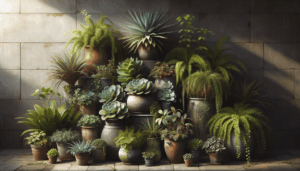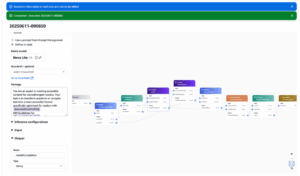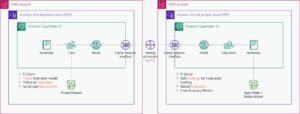The emergence of ChatGPT has placed artificial intelligence (AI) at the center of the global stage. With as many applications as controversies for its ability to generate fake videos and images that are indistinguishable from real ones, known as ‘deepfakes’, the initial enthusiasm with which society had welcomed this technology has turned into concern and fear. This is due to its potential to launch disinformation campaigns, as well as to appropriate the work of artists or computer programmers to train their models without recognizing or compensating their creators.
Some of these fears are also due to the difficulty of understanding how these data-driven systems arrive at their results. Techniques are needed to visualize the inside of AI systems, identifying patterns that help decipher how their black box works. This is the goal of the ‘EXPLAIN, chat.in.a.box’ project, which the Data Analysis and Visualization Group of the Barcelona Supercomputing Center-National Supercomputing Center (BSC-CNS) will present at the 30th edition of the Sónar festival, as part of the Sónar+D program, which takes place in Barcelona between June 15 and 17.
To try to show how AI works from the inside, the BSC team led by researcher Fernando Cucchietti has taken the Sónar festival itself as a reference. Scientists have collected lyrics from artists who have performed in the festival’s three-decade history and have entered them into GPT-4, the latest version of OpenAI’s popular chatbot, in order to visualize patterns in the data and cross-reference them with other artists and other editions of the event to discover their evolution over time.
“Our goal is to show how AI works from the inside. We have taken 30 years of Sónar songs and entered them into GPT-4 to analyze how this system views the work of the artists. We are thus opening the black box of AI to better understand how it captures patterns and trends in song lyrics. By exploring the result, we can understand more about how GPT-4 works, but also about Sónar and the artists who have performed in its history,” says Cucchietti.
Despite their name, AI systems are not intelligent, they simply reproduce statistical patterns that are not based on knowledge, without any representation of narratives or emotional states. They are powerful computational tools, with high processing capacity and access to a vast amount of data that, once patterns are detected, can complete others or generate variations on them.
“Therefore, to understand an AI system of this kind, it is necessary to find out what patterns it has found and how it uses them. This is not easy because the patterns are encoded as parameters in a huge network. The best way to do this is to create visual representations of these patterns to expose data trends and see how they have changed over time,” Cucchietti adds.
For the project, lyrics from around 40,000 songs from over a thousand artists have been collected and analyzed, and different patterns have been identified for the different musical and lyrical styles of many of them, their variation over time, and the similarities or differences between the artists who have graced the stages of the Barcelona festival.
Attendees at Sónar+D will be able to explore visual representations of these patterns, in this edition focusing on the impact of AI on the arts. In addition to the project by the Data Analysis and Visualization Group, which has a long history at the festival with various projects focused on the intersection of science and art, BSC will also be represented by researcher Joan Llort from the Earth Sciences department.
Llort, an oceanographer involved in projects that hybridize art and science, will participate in Sónar+D to explain his experience in co-creation processes with artists to rethink oceanographic observations from an aesthetic and conceptual point of view. This particular approach, between artistic residency and scientific communication, proposes erasing disciplines to offer new readings of scientific data.
Rights: Creative Commons.
Source: Sinc Agency
via: MiMub in Spanish












